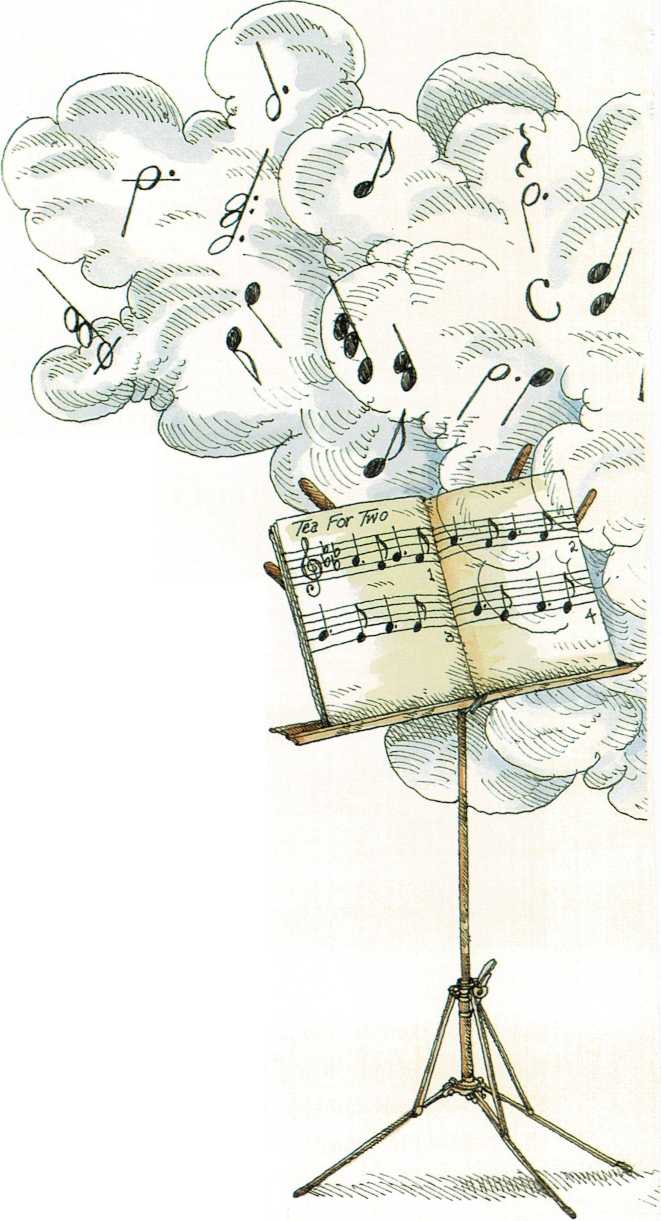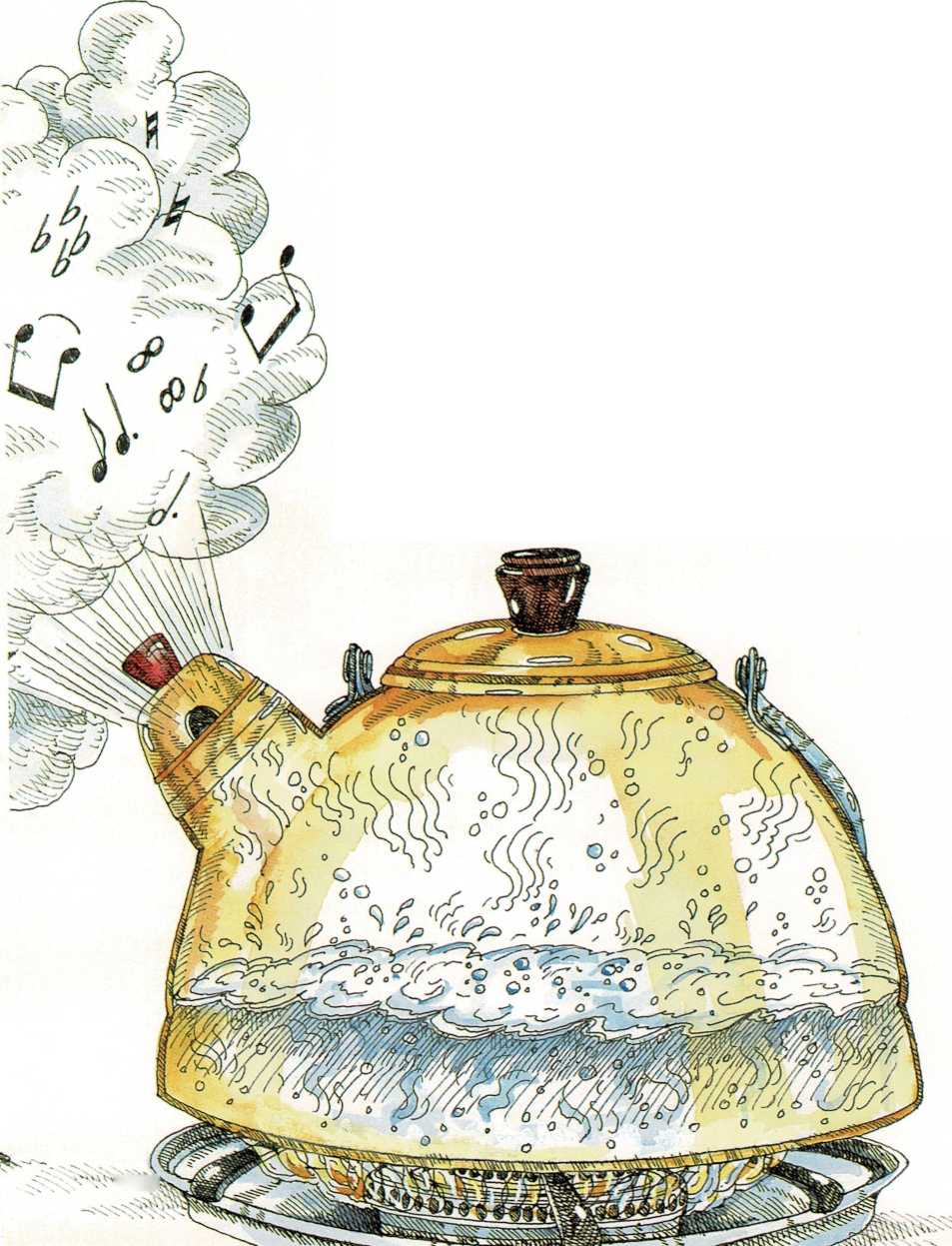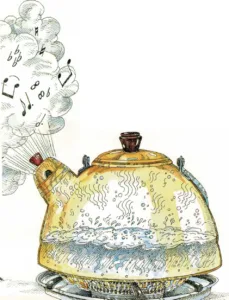
What makes a teakettle whistle?
You don’t have to watch a whistling teakettle to know when the water is
hot. The kettle will \”tell” you when the water begins to boil. The
kettle makes a long, loud whistle.
When you whistle, you push air out through a small opening that you
make with your lips. The whistling sound of the kettle is made in almost
the same way. But the push that makes the kettle whistle doesn’t come
from air. It comes from steam.
As the water inside the kettle is heated, the molecules take up energy.
That energy makes the molecules speed up and push hard against each
other. When the water is hot enough, some of it changes from a liquid to
a gas. It turns to steam.
Because the molecules are pushing hard against each other, the steam
expands—it takes up much more space than the hot water did. It pushes
against the inside of the kettle. But there is only one place where it
can escape—through the small hole in the spout. So it squeezes out
with a hard push, and the push makes a whistle.
When a large amount of water is boiled, the push from expanding steam
can be very strong. If the steam isn’t allowed to escape, it can be used
to push the moving parts of machines—to run ships, trains, and power
plants that make electricity.


